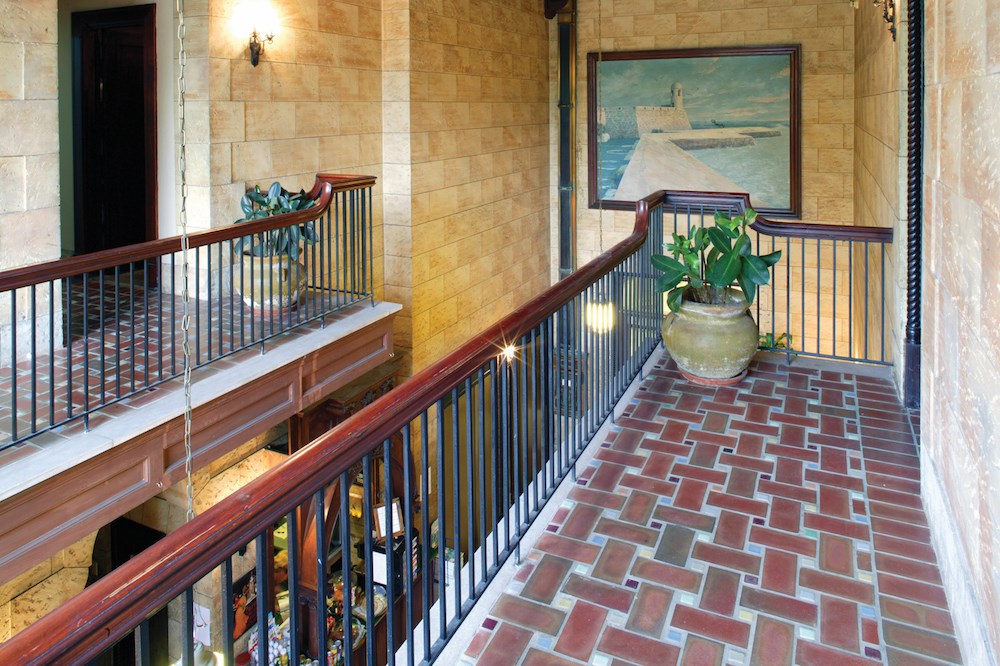
Examples of tile and grout flooring can be found as far back as 4,000 B.C. in Egypt, and since then, numerous cultures have found countless ways to improve the process and end product. Century upon century delivered new compositions, new colors, and new methods of firing and curing… And over the millennia, artistic creativity and exploration has resulted in some stunningly beautiful antique tile and grout surfaces.
For those fortunate enough to have vintage tile and grout surfaces, especially those of historical significance, proper maintenance and restoration can present significant challenges. Many vintage tile and grout surfaces can be easily damaged by chemicals and abrasion, and in cases where replacement materials are no longer available, risk assessment needs to be a central part of cleaning and renovation decisions.
Cautious and Careful
A tile and grout surface with historical importance must be handled very cautiously because of the lack of replacement materials and potential loss of significance as a historical surface.
So as not to deface or alter the original look, it’s important to first determine the type, make and integrity of the tile and grout materials present. Both the tile and grout should be tested to ascertain this, and any cleaning should first be done on a sample section.
The most replaceable aspect of vintage tile and grout surfaces is the grout itself. Although there are hundreds of different grout types in varying colors, porosity and composition, American surfaces over 100-years-old tended to use Portland cement for grout, or a combination of crushed shells and Portland cement. The latter is an incredibly fragile grout substance due to the calcium carbonate in the shells. Any type of acidic cleaner will eat the grout away.
Antique tiles of this age are typically ceramic with a glaze that was painted on before firing. Regular baked ceramic tiles tend to have fallen apart by now.
Cleaning with Care
Antique tile and grout surfaces in good condition can be regularly maintained by first removing dirt and debris. This should be done with as little abrasion as possible, so dry or damp cloth mops or a wet/dry vac are good tools to use.
Cleaning should be performed as gently as possible. In many instances, warm water is the safest approach. Soiled water should then be removed with a wet vac. When warm water isn’t enough to remove soiling, a non-soap based alkaline cleaner specifically designed for the tile and grout types may be used. It should not be acidic or abrasive, nor should heavy equipment or abrasive pads be used for agitation. Occasionally, an alkaline degreaser may also be needed for routine maintenance.
In some instances where antique tiles have become cloudy or hazy from environmental contaminants, the use of an acid-based cleaner may be necessary, but it should always be handled by a professional tile and grout restoration company.
As the National Park Service states in Preserving Historic Ceramic Tile Floors, “…there are some acid-based cleaners specially formulated for cleaning and removing coatings from ceramic tile floors that may be acceptable, but even these must be used with caution. Sometimes an acid-based cleaner may, in fact, be needed to remove discoloration or staining caused by lime or cement mortar. But, it should be tested first, used with caution, and applied only to a thoroughly wetted tile floor from which excess water has been removed. …Floor tiles should be always rinsed thoroughly after cleaning.”
Long-Term Protection
Most people want to do whatever is necessary to maintain and protect a historic tile and grout surface, but surface coatings can come with considerable risks.
Even when well-maintained, coatings don’t last forever and the process of repairing and reapplying them can be fairly aggressive. Since it’s possible the tile could be damaged in the process, the application of surface coatings should be considered very carefully.
In some situations, an impregnator may be a much wiser option. They do not alter the original appearance of the tile, can reduce porosity and offer some protection against staining of the grout lines and tile surface. As stated above, all maintenance and restoration decisions for antique surfaces should be considered carefully with tile and grout restoration professionals and a conservator.
It’s also wise to review local historical society guidelines before attempting any restoration so as not to lose any significance as a historical surface.
